Felipe Gil-Castiñeira
Automatic generation of insights from workers' actions in industrial workflows with explainable Machine Learning
Jun 18, 2024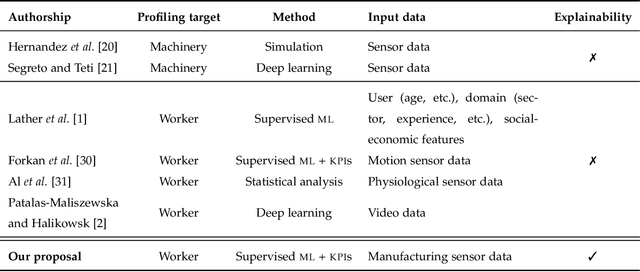
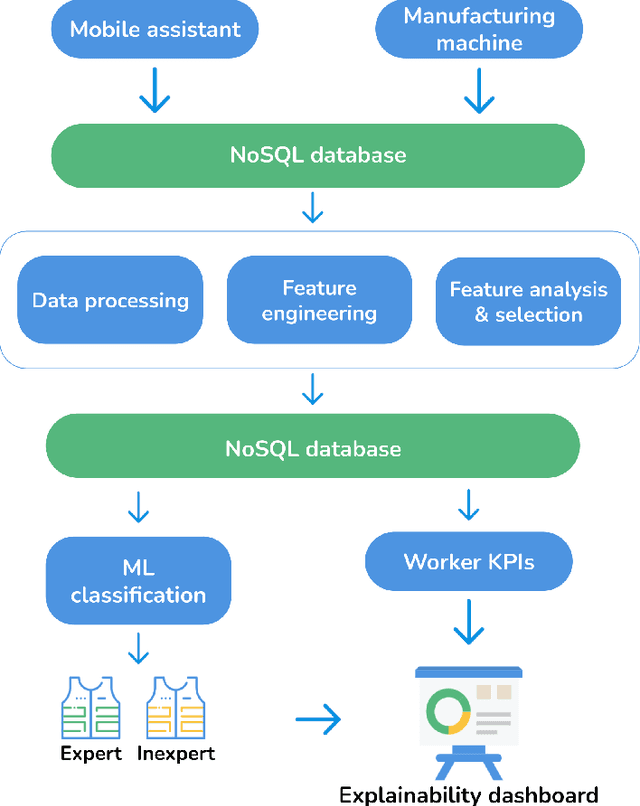
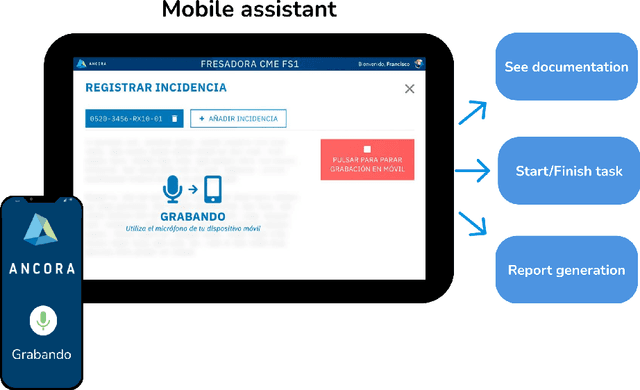
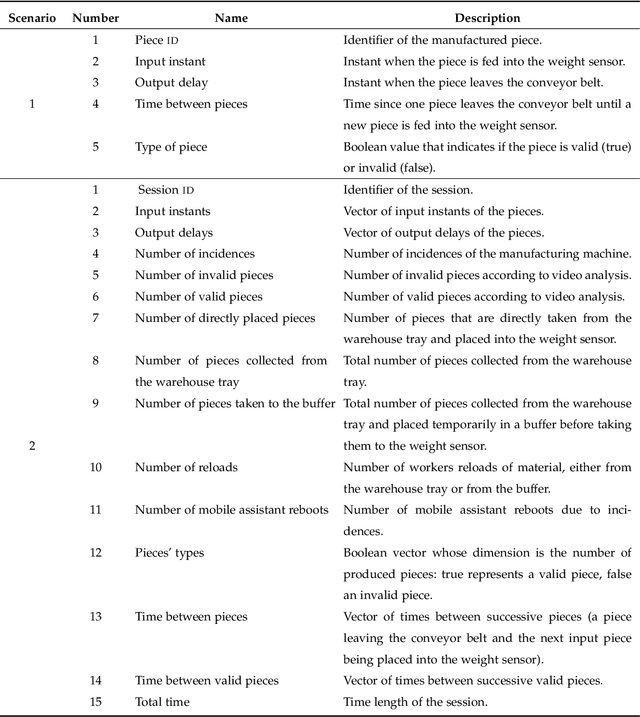
Abstract:New technologies such as Machine Learning (ML) gave great potential for evaluating industry workflows and automatically generating key performance indicators (KPIs). However, despite established standards for measuring the efficiency of industrial machinery, there is no precise equivalent for workers' productivity, which would be highly desirable given the lack of a skilled workforce for the next generation of industry workflows. Therefore, an ML solution combining data from manufacturing processes and workers' performance for that goal is required. Additionally, in recent times intense effort has been devoted to explainable ML approaches that can automatically explain their decisions to a human operator, thus increasing their trustworthiness. We propose to apply explainable ML solutions to differentiate between expert and inexpert workers in industrial workflows, which we validate at a quality assessment industrial workstation. Regarding the methodology used, input data are captured by a manufacturing machine and stored in a NoSQL database. Data are processed to engineer features used in automatic classification and to compute workers' KPIs to predict their level of expertise (with all classification metrics exceeding 90 %). These KPIs, and the relevant features in the decisions are textually explained by natural language expansion on an explainability dashboard. These automatic explanations made it possible to infer knowledge from expert workers for inexpert workers. The latter illustrates the interest of research in self-explainable ML for automatically generating insights to improve productivity in industrial workflows.
Self-Corrective Sensor Fusion for Drone Positioning in Indoor Facilities
Mar 30, 2024



Abstract:Drones may be more advantageous than fixed cameras for quality control applications in industrial facilities, since they can be redeployed dynamically and adjusted to production planning. The practical scenario that has motivated this paper, image acquisition with drones in a car manufacturing plant, requires drone positioning accuracy in the order of 5 cm. During repetitive manufacturing processes, it is assumed that quality control imaging drones will follow highly deterministic periodic paths, stop at predefined points to take images and send them to image recognition servers. Therefore, by relying on prior knowledge about production chain schedules, it is possible to optimize the positioning technologies for the drones to stay at all times within the boundaries of their flight plans, which will be composed of stopping points and the paths in between. This involves mitigating issues such as temporary blocking of line-of-sight between the drone and any existing radio beacons; sensor data noise; and the loss of visual references. We present a self-corrective solution for this purpose. It corrects visual odometer readings based on filtered and clustered Ultra-Wide Band (UWB) data, as an alternative to direct Kalman fusion. The approach combines the advantages of these technologies when at least one of them works properly at any measurement spot. It has three method components: independent Kalman filtering, data association by means of stream clustering and mutual correction of sensor readings based on the generation of cumulative correction vectors. The approach is inspired by the observation that UWB positioning works reasonably well at static spots whereas visual odometer measurements reflect straight displacements correctly but can underestimate their length. Our experimental results demonstrate the advantages of the approach in the application scenario over Kalman fusion.
Entertainment chatbot for the digital inclusion of elderly people without abstraction capabilities
Mar 29, 2024



Abstract:Current language processing technologies allow the creation of conversational chatbot platforms. Even though artificial intelligence is still too immature to support satisfactory user experience in many mass market domains, conversational interfaces have found their way into ad hoc applications such as call centres and online shopping assistants. However, they have not been applied so far to social inclusion of elderly people, who are particularly vulnerable to the digital divide. Many of them relieve their loneliness with traditional media such as TV and radio, which are known to create a feeling of companionship. In this paper we present the EBER chatbot, designed to reduce the digital gap for the elderly. EBER reads news in the background and adapts its responses to the user's mood. Its novelty lies in the concept of "intelligent radio", according to which, instead of simplifying a digital information system to make it accessible to the elderly, a traditional channel they find familiar -- background news -- is augmented with interactions via voice dialogues. We make it possible by combining Artificial Intelligence Modelling Language, automatic Natural Language Generation and Sentiment Analysis. The system allows accessing digital content of interest by combining words extracted from user answers to chatbot questions with keywords extracted from the news items. This approach permits defining metrics of the abstraction capabilities of the users depending on a spatial representation of the word space. To prove the suitability of the proposed solution we present results of real experiments conducted with elderly people that provided valuable insights. Our approach was considered satisfactory during the tests and improved the information search capabilities of the participants.
6G White Paper on Edge Intelligence
Apr 30, 2020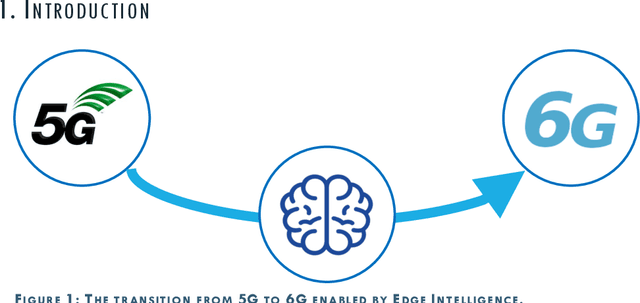

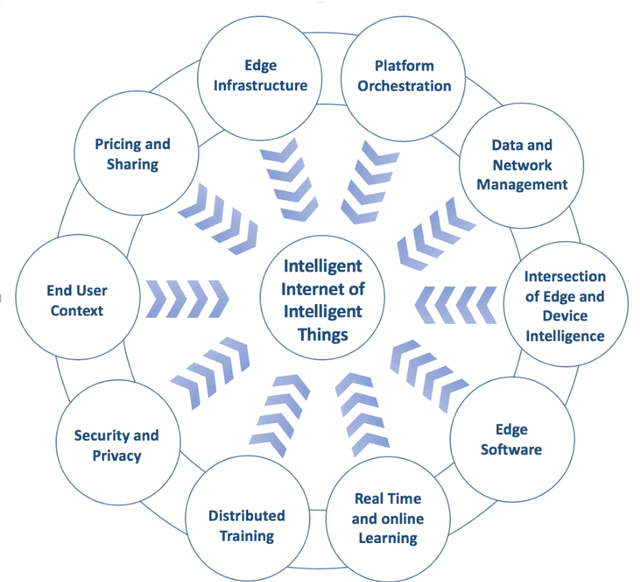
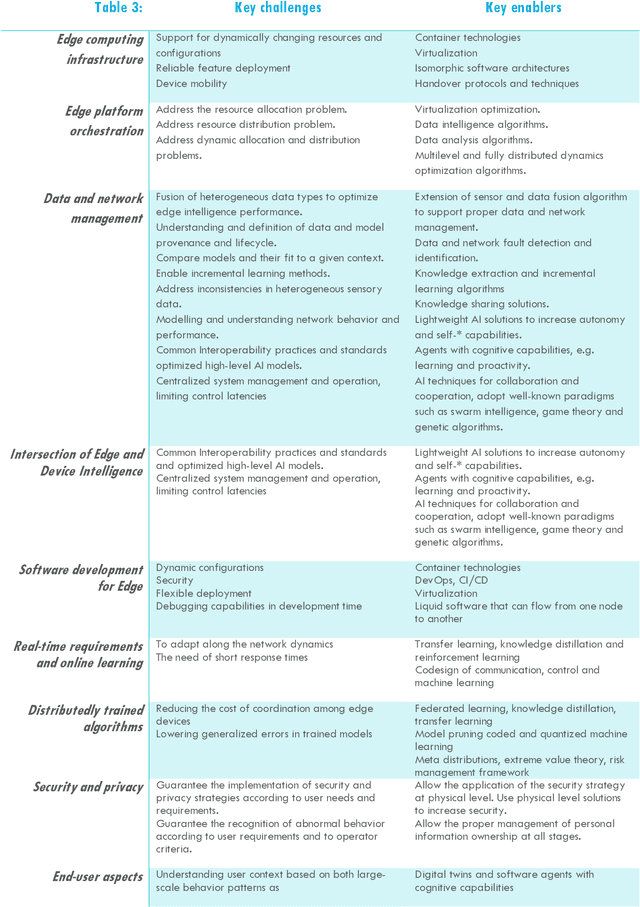
Abstract:In this white paper we provide a vision for 6G Edge Intelligence. Moving towards 5G and beyond the future 6G networks, intelligent solutions utilizing data-driven machine learning and artificial intelligence become crucial for several real-world applications including but not limited to, more efficient manufacturing, novel personal smart device environments and experiences, urban computing and autonomous traffic settings. We present edge computing along with other 6G enablers as a key component to establish the future 2030 intelligent Internet technologies as shown in this series of 6G White Papers. In this white paper, we focus in the domains of edge computing infrastructure and platforms, data and edge network management, software development for edge, and real-time and distributed training of ML/AI algorithms, along with security, privacy, pricing, and end-user aspects. We discuss the key enablers and challenges and identify the key research questions for the development of the Intelligent Edge services. As a main outcome of this white paper, we envision a transition from Internet of Things to Intelligent Internet of Intelligent Things and provide a roadmap for development of 6G Intelligent Edge.
 Add to Chrome
Add to Chrome Add to Firefox
Add to Firefox Add to Edge
Add to Edge